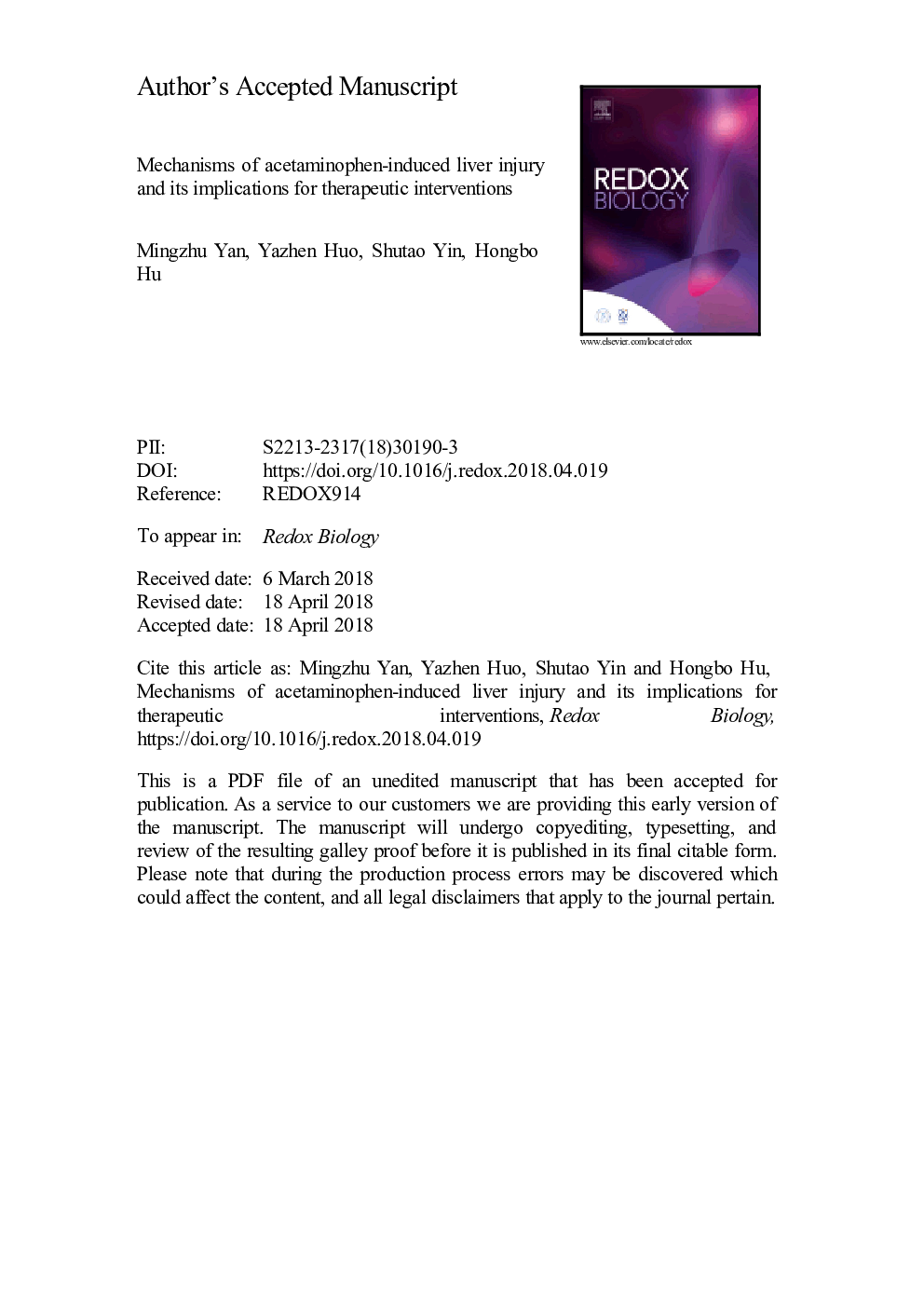| Article ID | Journal | Published Year | Pages | File Type |
|---|---|---|---|---|
| 8286376 | Redox Biology | 2018 | 40 Pages |
Abstract
Acetaminophen (APAP) overdose is the leading cause of drug-induced acute liver failure in many developed countries. Mitochondrial oxidative stress is considered to be the predominant cellular event in APAP-induced liver injury. Accordingly, N-acetyl cysteine, a known scavenger of reactive oxygen species (ROS), is recommended as an effective clinical antidote against APAP-induced acute liver injury (AILI) when it is given at an early phase; however, the narrow therapeutic window limits its use. Hence, the development of novel therapeutic approaches that can offer broadly protective effects against AILI is clearly needed. To this end, it is necessary to better understand the mechanisms of APAP hepatotoxicity. Up to now, in addition to mitochondrial oxidative stress, many other cellular processes, including phase I/phase II metabolism, endoplasmic reticulum stress, autophagy, sterile inflammation, microcirculatory dysfunction, and liver regeneration, have been identified to be involved in the pathogenesis of AILI, providing new targets for developing more effective therapeutic interventions against APAP-induced liver injury. In this review, we summarize intracellular and extracellular events involved in APAP hepatotoxicity, along with emphatic discussions on the possible therapeutic approaches targeting these different cellular events.
Keywords
Related Topics
Life Sciences
Biochemistry, Genetics and Molecular Biology
Ageing
Authors
Mingzhu Yan, Yazhen Huo, Shutao Yin, Hongbo Hu,
